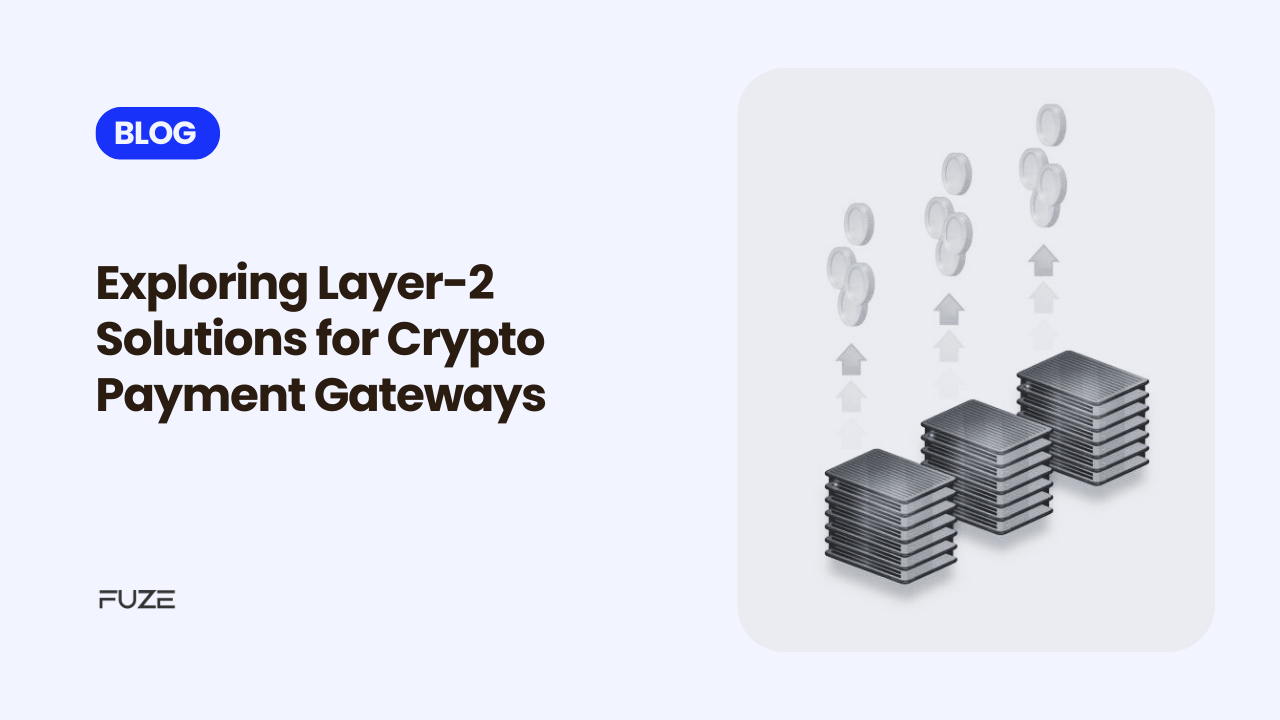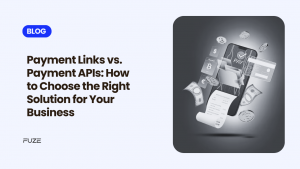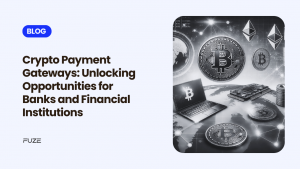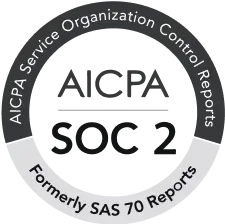The growth of blockchain networks like Ethereum has brought tremendous innovation to the financial ecosystem, enabling decentralized payments, smart contracts, and other digital solutions. However, this widespread adoption has exposed a fundamental issue: network congestion. As more transactions flood the blockchain, users face higher gas fees, slower transaction processing times, and reduced efficiency. These problems not only hinder individual users but also pose significant challenges for businesses relying on crypto payments, especially those operating at scale or dealing with microtransactions.
This scalability problem arises because traditional Layer-1 blockchains process all transactions on the main chain. Layer-2 solutions offer a revolutionary approach to solving these scalability challenges. By offloading most transactions from the main blockchain and processing them on secondary layers, Layer-2 frameworks enable faster, cheaper, and more efficient operations.
In this blog, we’ll explore how Layer-2 solutions work, their role in solving scalability challenges, and how businesses can leverage these technologies to build more efficient, cost-effective crypto payments.
Understanding Layer-2: How It Works
To grasp the impact of Layer-2, it’s essential to understand the problem it addresses: scalability on Layer-1 blockchains. Layer-1 refers to the base blockchain, such as Ethereum or Bitcoin. These networks handle transactions directly on their chain, which can become congested as activity increases, leading to slower transaction times and high gas fees.
Layer-2 solutions are frameworks or protocols built on top of the base layer to offload transaction processing. Here’s how they work:
- Transaction Bundling
Layer-2 networks aggregate multiple transactions into a single batch. This batch is then submitted to the main blockchain (Layer-1) as one compressed transaction, drastically reducing data load on the main chain. - Validation Models
- Rollups: These are the most common Layer-2 solutions.
- Optimistic Rollups (e.g., Optimism): Assume transactions are valid by default but allow a dispute period for fraud detection.
- Zero-Knowledge (zk) Rollups: Use cryptographic proofs to validate transactions instantly without revealing sensitive details.
- State Channels: Direct, off-chain interactions between participants that only require Layer-1 interaction for channel opening and closing.
- Plasma: Similar to rollups but creates smaller “child chains” for off-chain processing.
- Rollups: These are the most common Layer-2 solutions.
- Security Integration
Layer-2 solutions inherit the security of the main blockchain. For instance, a zk-rollup operating on Ethereum leverages Ethereum’s robust decentralization and immutability.
Key Benefits of Layer-2 Solutions for Crypto Payments
- Reduced Gas Fees
By processing transactions off-chain, Layer-2 drastically lowers the computational demand on the base layer, resulting in negligible transaction costs. This is critical for microtransactions and businesses operating on tight margins. - Scalability
Layer-2 can process thousands of transactions per second (TPS) compared to Ethereum’s current capacity of around 15-30 TPS. - Improved Latency
Near-instant transaction confirmation enhances the user experience, making crypto payments as fast as traditional digital payment methods. - Environmentally Friendly
By optimizing resource usage, Layer-2 solutions reduce the energy consumption associated with blockchain transactions.
Layer-2 Solutions in Action for Businesses
1. E-Commerce
Online merchants can integrate Layer-2-enabled crypto payment gateways to accept payments without worrying about fluctuating gas fees. This not only makes crypto payments cost-effective but also encourages more customers to pay with digital assets.
2. Subscription-Based Models
Platforms offering subscription services, such as SaaS or streaming platforms, can use Layer-2 technology for recurring payments. Predictable low fees make these models more sustainable.
3. Cross-Border Payments
Layer-2 technology enables seamless, low-cost international payments, eliminating traditional banking fees and delays.
4. Gig Economy
Freelancers and gig workers can benefit from Layer-2 integrations, ensuring instant payouts without exorbitant fees.
5. DeFi Applications
Decentralized Finance platforms can leverage Layer-2 for high-frequency trading and lending, making the user experience smooth and affordable.
Business Advantages of Adopting Layer-2 Crypto Gateways
- Cost Efficiency Businesses can save significantly on transaction costs, which is especially advantageous for low-value transactions.
- Customer Retention Lower fees and faster transactions enhance the customer experience, fostering loyalty.
- Market Expansion Affordable cross-border transactions enable businesses to cater to international customers, expanding their market reach.
- Regulatory Compliance Layer-2 solutions often integrate better compliance tools, helping businesses adhere to international regulations while maintaining speed and efficiency.
- Competitive Edge Early adoption of Layer-2 solutions signals innovation, giving businesses a competitive advantage in the evolving digital payment space.
Leading Layer-2 Solutions
1. Optimism
A popular Optimistic Rollup, Optimism offers scalability for Ethereum with its fraud-proof model, ensuring fast and cost-effective transactions.
2. Arbitrum
Another Optimistic Rollup solution, Arbitrum provides developers with easy-to-use tools to integrate Layer-2 scaling into their applications.
3. Polygon (formerly Matic)
Polygon combines Layer-2 features with a multi-chain framework, enabling high-speed transactions at a fraction of the cost.
4. StarkNet
Based on zk-rollup technology, StarkNet offers unparalleled scalability and privacy, making it ideal for enterprise use.
5. Loopring
Known for its zk-rollup-based decentralized exchange, Loopring also supports high-performance payment solutions.
Conclusion
Layer-2 technologies are transforming the crypto payment ecosystem, addressing longstanding challenges of high costs and slow speeds. By leveraging these advancements, companies can offer faster, cheaper, and more scalable payment solutions, paving the way for mainstream crypto adoption.
Fuze is already exploring Layer-2 protocols to bring these benefits to businesses globally. The future of crypto payments is here, and it’s being built on Layer-2. Connect with us today to discover how Fuze can simplify your payment operations and unlock new growth opportunities for your business.
Disclaimer: Virtual assets carry significant risks, including high volatility and potential loss of your entire investment. They are not backed by governmental protections, and recourse may be limited in case of loss. Always assess your risk tolerance, fully understand the risks, and seek independent financial advice if needed before investing.
Frequently Asked Questions
1. What are some popular Layer-2 solutions used in crypto payments?
Technologies like Optimism, zk-Rollups, Arbitrum, and Polygon are commonly used Layer-2 solutions that enable faster, cheaper, and secure transactions.
2. Are Layer-2 solutions secure for crypto payments?
Yes, Layer-2 solutions inherit the security features of their underlying Layer-1 blockchain while introducing additional mechanisms to ensure transaction integrity.
3. How can businesses integrate Layer-2 solutions into their payment systems?
Businesses can integrate Layer-2 solutions via crypto payment gateways that support Layer-2 protocols, offering APIs for seamless onboarding and interoperability with existing systems.
4. What are the cost savings of using Layer-2 for payments?
Layer-2 solutions significantly reduce gas fees, often cutting transaction costs, making them ideal for businesses looking to lower operational expenses.
5. Can Layer-2 solutions handle high transaction volumes for global businesses?
Yes, Layer-2 solutions are designed for scalability, capable of handling thousands of transactions per second, meeting the needs of global businesses.







